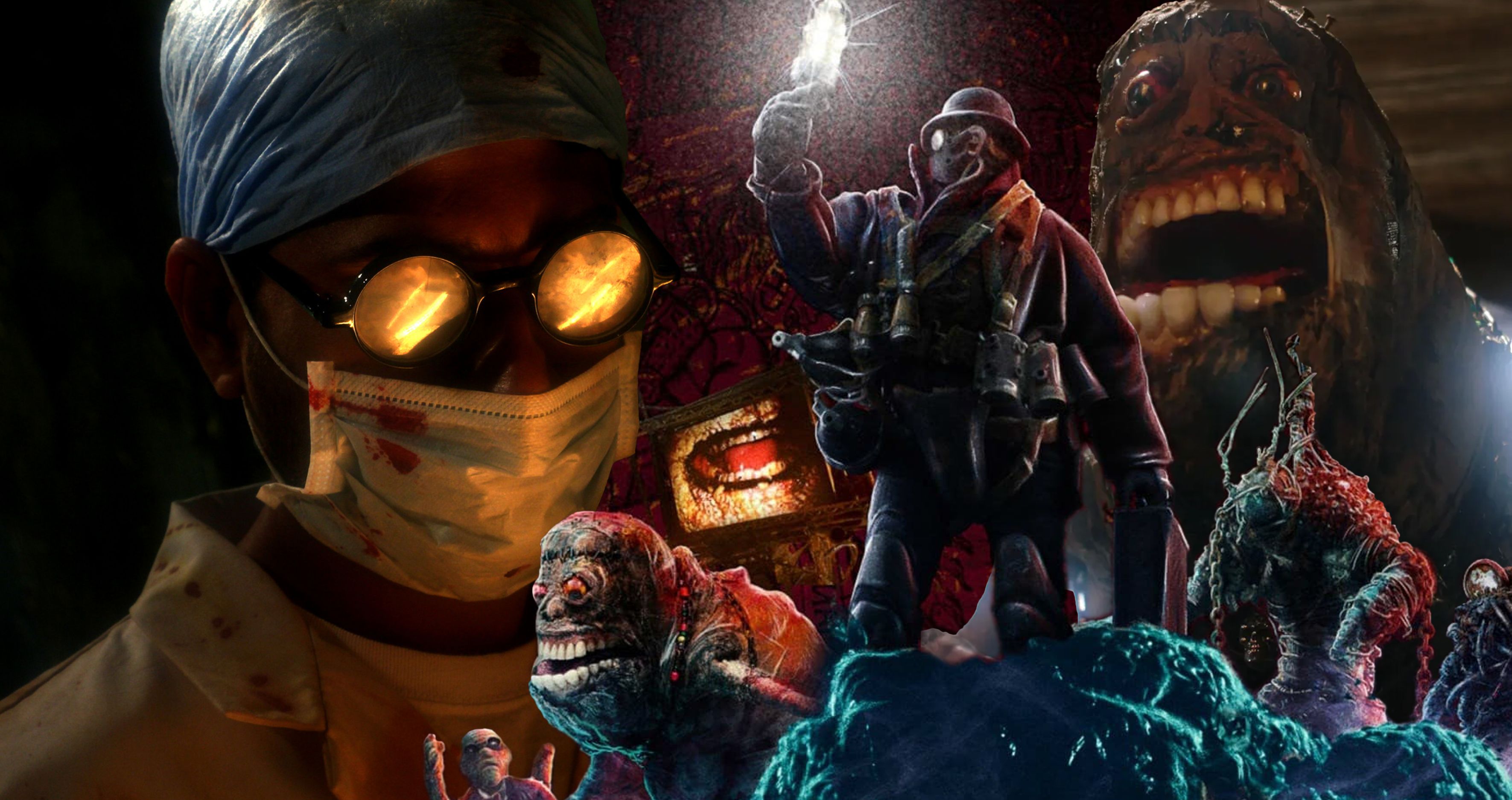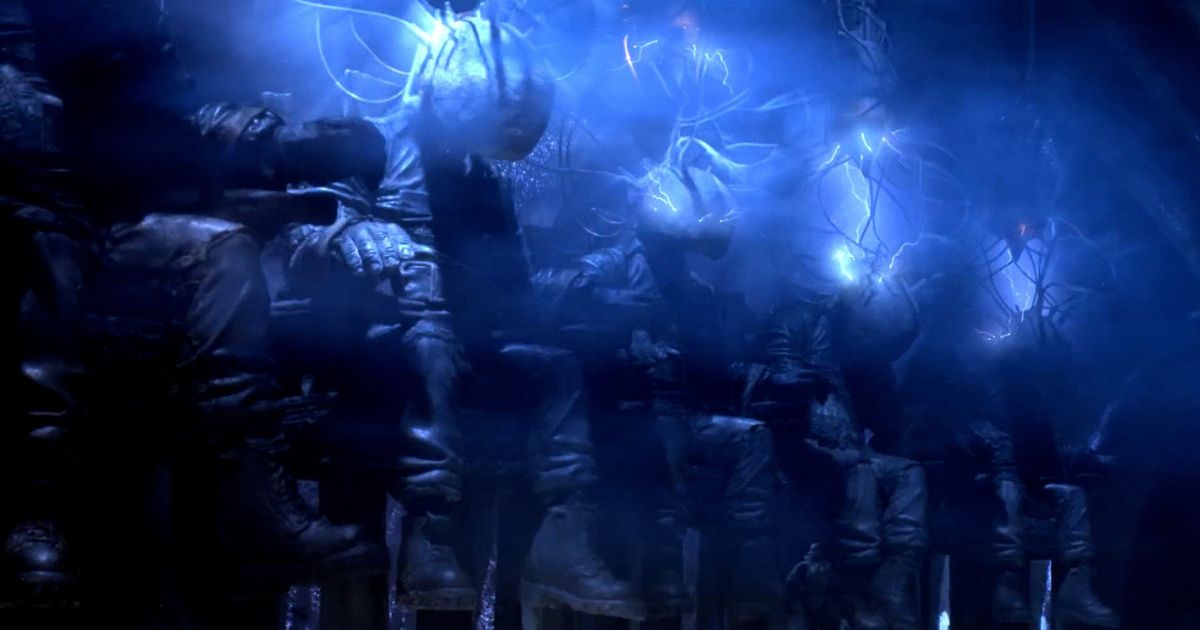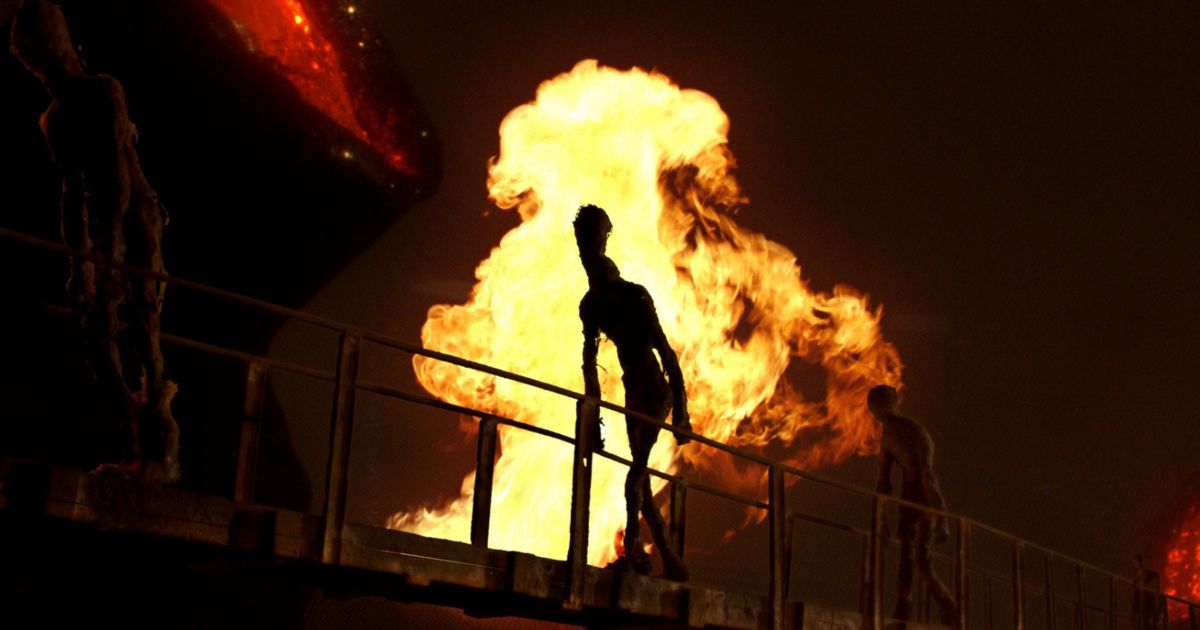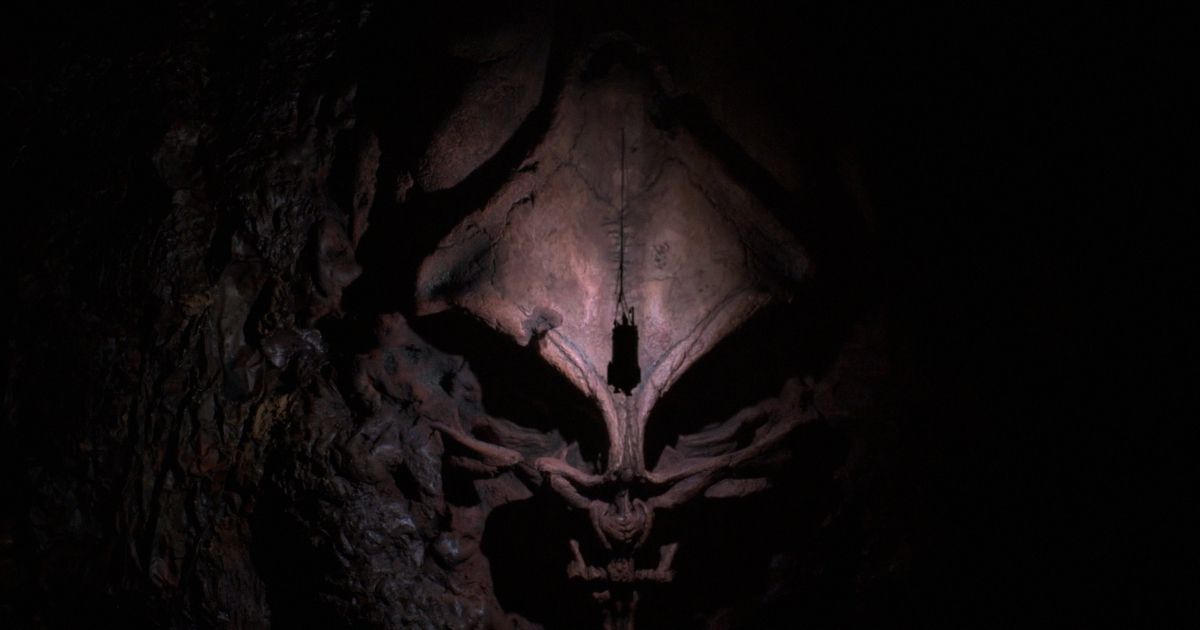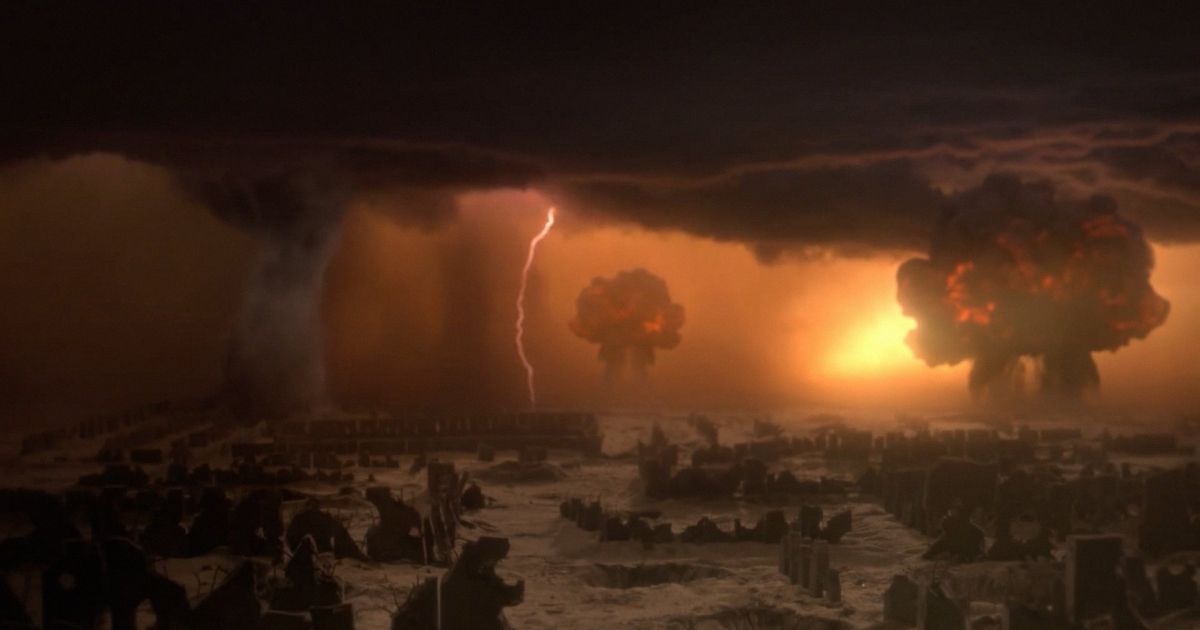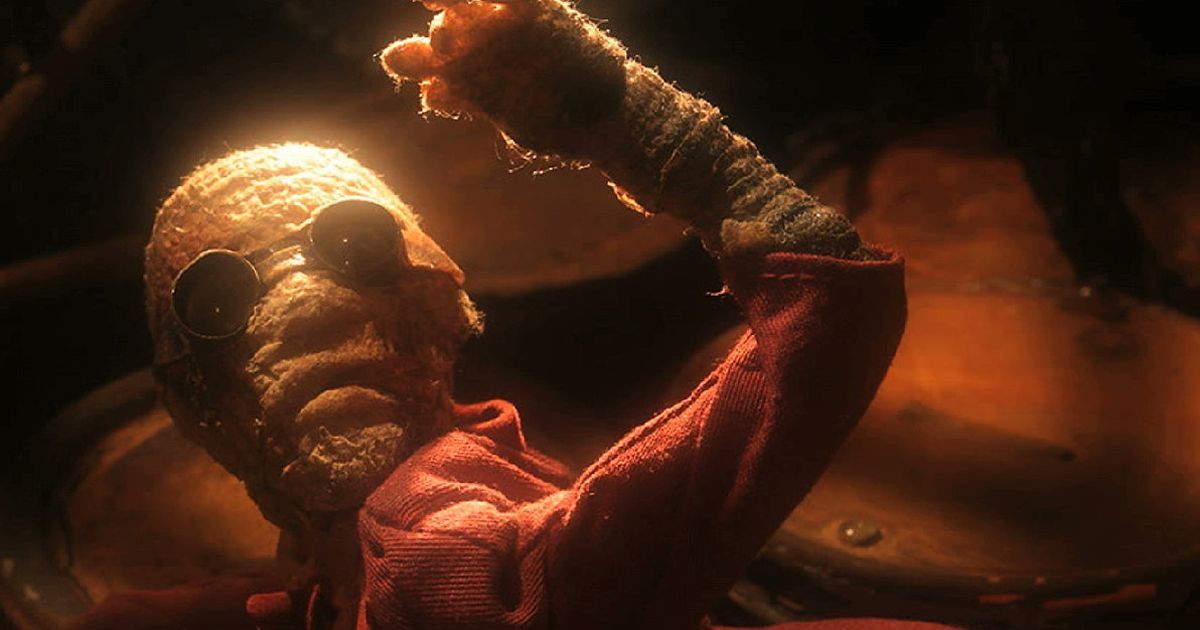Every blue moon, a truly artistic and experimental film sprouts up from the dark cinematic cracks where so many great movies slip into. From Eraserhead to The Tree of Life, the intersection of popularity and avant-garde visions are few and far between. So it was a tiny miracle that Mad God reached the masses through the streaming service Shudder, gaining word-of-mouth praise and popularity along the way.
Part of its success can be attributed to the unique backstory behind the film, shrouded in myth and legend as it is — Phil Tippett, a special effects master involved in Star Wars, Robocop, Jurassic Park, and many more classics, spent 30 years on and off making a nightmarish stop-motion film that sent him to the brink of insanity. Context aside, the film itself is an audiovisual experience like no other, a nightmarish vision of a war-torn, post-apocalyptic world brimming with artistic and psychological references.
The film had its home media release on December 6 through RLJE Films and Shudder, and Tippett took some time to walk us through the film and its new Blu-ray edition.
Mad God Is Disturbing and Has No Plot in the Traditional Sense
Mad God is a cinematic phantasmagoria that uses go-motion, miniature sets, live-action segments, and puppetry (all with hand-made precision and uniqueness) to depict an abstract nightmare. The Assassin, a masked figure, descends through a hellish world in an attempt to plant a bomb, a quest that leads him and the viewer through a disgusting industrial abyss of monsters and grime. This is why it's so surprising how acclaimed and beloved it's become, especially in the horror community — in general, actually disturbing films without solid storylines don't find much of an audience.
An important moment in Tippett's creative development came when he heard the filmmaker Paul Verhoeven answer a reporter's questions. Verhoeven, whose Robocop and Starship Troopers are outfitted with Tippett's effects, was speaking about his approach to film. "He said that movies don't have to be about anything, which was actually very helpful," said Tippett. Films, just like other artistic mediums such as painting or music, don't need a traditional plot, something Mad God embraces with its loose, allegorical, dreamlike structure.
Mad God is being released with a bevy of special features which illuminate Tippett's influences, inspiration, and process. In one featurette, Tippett says, "It's not necessarily a story with a beginning, middle, and end, but something more expansive." In the incredible commentary track (with Tippett and filmmaker Guillermo del Toro, one of his many famous admirers), del Toro says, "It's almost like someone assembling found objects, like a philosophical collage."
Meaning and References in Mad God
The film could contain an extensive list of footnotes, seeing as it's the result of three decades Tippett spent imbibing philosophical, psychological, artistic, and religious texts. All these influences percolated in Tippett's brain throughout the years like ingredients in a recipe, and the final dish was Mad God. Tippett explained:
As a young filmmaker, my wife worked in the editorial crew for Amadeus, so we'd go out to dinner with Milos Forman. And I asked him if he had any advice, and he gave me the best advice I ever got, which was, "If you want to take a good sh*t, you have to eat well." Like the more time you have in development, the better something is going to be. And I immediately took that to heart. I have no reason at all why Mad God stayed with me, with no real hope of rebooting it, but it was, like, just this religious vision.
From Hieronymus Bosch to John Milton and Carl Jung, Mad God is overflowing with ideas and citations, though the filmmaker doesn't think that audiences need to understand these references to appreciate the film. "No, I don't think so, but it's not for me to say," said Tippett. "European responses were very different from what I got here in the United States, which was a lot of like, 'I don't understand it, but still liked it.' But we don't have the greatest education system in this country. The European press got all the references to Dante, and psychology, and Freud, all that kind of stuff. So they were right on. I think you can only interpret this in terms of those kinds of references."
In many ways, Mad God is the culmination of culture itself, or at least culture's intersection with Tippett's own particular brand of genius. Then again, most art is birthed from that dialogue between personal vision and cultural influence. "No artist can really avoid the void of their culture," continued Tippett. "You have no defense from somehow defaulting to the world that you live in, which is beautiful and horrible."
Phil Tippett Responds to Mad God's Response
This intellectually complicated, visually nightmarish, poetically bleak film faced a lot of rejection before its surprise success, and the response has been overwhelmingly positive. "It exceeded all my expectations," said Tippett. "Because there were so many people who I respected that I sent the film to long before it was released. My friends, all filmmakers, they said that it's an exceptional thing, but it's not for everybody, which I accepted, and I knew. The first two film festivals that I entered in, one was Berlin and I can't recall the other one, they rejected it, which spiraled me into depression, but I should have steeled myself for this kind of response."
"But then, when it premiered at Locarno, it just took off from there," continued Tippett. After an on-and-off, 30-year journey, Mad God became available to the masses through Shudder, where both fans of Tippett and the uninitiated alike were stunned by this uniquely gruesome, sad, horrifying film. The release seems to have given Tippett a lot of relief, after suffering through his art for all these years as a "method director," as he calls it. The creation of Mad God ran parallel with Tippett's creative growth as an artist, and the literal growth of his children and family.
Now it's all over. "With a certain ambivalence from both my kids as a result of the process," added Tippett. "It took me away from my family and turned me into a crazy person. So, towards the end, it was difficult for everybody. It kind of left a bad taste. It took some distance, but they enjoy it and appreciate it now." His daughter, Maya, filmed two excellent featurettes for the home media release. They chronicle Tippett's effects studio over the years and his methodical, draining process; it almost seems therapeutic to see these special features in the release of Mad God, as if a chapter is being closed for this creative family.
A New Film May Come After This Release of Mad God
A new chapter, however, is beginning, as Tippett takes on new projects. He's preparing himself to work on visual effects for Frank Miller's proposed live-action adaptation of Corto Maltese, and most importantly, developing a new film titled Pequin's Pendiquen. "You know, that'll be interesting. I've got a lot of tricks up my sleeve, because these things are expensive, but there is a whole new technology that's out there. Every time technology changes, it totally changes your way of thinking about stuff, and I'm not afraid of that. I'm actually very excited about it." Tippett elaborated:
So I would like to believe that I can get costs way down, plus the tone of Pequin is significantly lighter. It's much more like Tex Avery, but the canary sings one song. So it's got whatever it is that I do, in terms of horror and violence in it, but I figure I'll make two versions of it — shoot it with the violence and cut it down for PG-13, and then release the Director's Cut or whatever.
Tippett promised that, this time, it won't take him 30 years. Meanwhile, though, any fan of experimental film, horror, or simply art itself owes it to themselves to check out Mad God. From RLJE Films and Shudder, Mad God is now available on digital, DVD, Blu-ray, and a fine Steelbook combination of the two.

